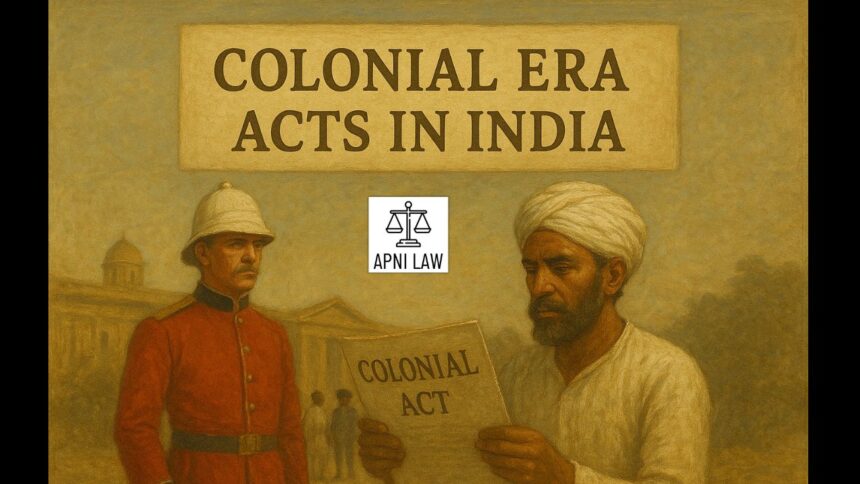Introduction
The Simon Commission of 1927 stands out as one of the most controversial events in India’s constitutional history. Sent by the British government to review the Government of India Act 1919, the Commission immediately became the target of widespread protests. Its members included no Indians, only seven British men, which earned it the label of an “all-white” body. To many Indians, this exclusion symbolized the arrogance of colonial rule and the denial of Indian voices in shaping their own destiny. The protests against the Simon Commission not only united different sections of Indian society but also accelerated the demand for complete independence.
Background to the Commission
The Government of India Act 1919, also known as the Montagu-Chelmsford Reforms, had introduced dyarchy in provinces and promised gradual progress toward self-government. A clause in the Act stated that its working would be reviewed after ten years. Instead of waiting until 1929, the British government appointed a commission in 1927, two years early. The task of this body was to examine the functioning of the 1919 reforms and suggest future steps.
Prime Minister Stanley Baldwin’s Conservative government set up the commission under Sir John Simon, a British statesman. The Commission included seven British members of Parliament but not a single Indian. The decision outraged Indian political leaders across the spectrum, who saw it as a deliberate insult and a refusal to recognize Indians’ political maturity.
Why the Commission Was Rejected
Indians opposed the Simon Commission because it excluded them from a process that directly affected their political future. Leaders argued that Indians were fully capable of assessing their constitutional needs and should have been included in such a crucial body. The “all-white” composition gave the impression that Britain still viewed India as unfit for self-rule, despite decades of nationalist movements and sacrifices.
The Indian National Congress, the Muslim League, and other political organizations joined in rejecting the Commission. Even leaders who had previously cooperated with the British, such as Mohammad Ali Jinnah, expressed dissatisfaction. The unity of opposition cut across ideological and communal divides, showing that the question of representation had become central to India’s political struggle.
Nationwide Protests and Slogan “Simon Go Back”
When the Commission landed in Bombay in February 1928, it was greeted with massive protests. Demonstrators carried black flags and shouted the slogan “Simon Go Back,” which soon became the rallying cry of the movement. Across India, students boycotted schools, workers struck work, and lawyers refused to cooperate in courts. The protests reflected a rare moment of unity among moderates, extremists, Hindus, and Muslims.
One of the most tragic moments during the protests occurred in Lahore in October 1928. Lala Lajpat Rai, a respected nationalist leader, led a peaceful march against the Commission. The police responded with brutal lathi charges, during which Rai was injured. He later died from his injuries, and his martyrdom gave the protests a new wave of energy. The incident deeply stirred the nation and inspired revolutionaries like Bhagat Singh to intensify their struggle against British rule.
The Indian Response: Nehru Report 1928
Since the Simon Commission excluded Indians, political leaders decided to draft their own constitutional plan. In 1928, an All Parties Conference appointed a committee under Motilal Nehru to prepare a report. Known as the Nehru Report, it called for dominion status for India, a bicameral legislature, and fundamental rights. Although the report could not secure complete agreement among all political groups, it demonstrated that Indians were capable of drafting their own constitutional framework without British guidance.
Recommendations of the Commission
Despite the protests, the Simon Commission completed its work and submitted its report in 1930. It rejected the system of dyarchy in provinces, admitting that it had failed. Instead, it recommended the introduction of provincial autonomy, which would later form the basis of the Government of India Act 1935. However, it did not support granting full responsible government at the central level, showing that Britain was still unwilling to share power fully.
The Commission also suggested the continuation of communal representation, which further divided Indian politics along religious lines. While its technical recommendations were significant, they were overshadowed by the legitimacy crisis created by its composition.
Criticism of the Simon Commission
The biggest criticism of the Simon Commission was its exclusion of Indians. At a time when nationalist aspirations had reached new heights, sending an “all-white” body signaled arrogance and disregard. Critics also noted that the Commission failed to address the demand for dominion status or independence. Instead, it recommended cautious and limited reforms, which fell far short of Indian expectations.
Another criticism was its reinforcement of communal electorates. By continuing the system of separate representation, the Commission deepened religious divisions and weakened the possibility of national unity. This was consistent with the British policy of divide and rule, which had already fueled mistrust among communities.
Long-Term Significance of the Commission
Although the Simon Commission was a political failure in terms of acceptance, its long-term significance was immense. The protests against it created a new sense of unity and urgency within the nationalist movement. The slogan “Simon Go Back” became one of the most powerful expressions of resistance during the colonial period.
The Commission’s recommendations, especially on provincial autonomy, shaped the Government of India Act 1935, which introduced elected governments in provinces. More importantly, the rejection of the Commission strengthened the call for complete independence, which Congress formally adopted in 1929 with the Lahore Session’s demand for Purna Swaraj. In this way, the Simon Commission indirectly accelerated India’s march toward freedom.
Questions and Answers
Q1. Why did Indians protest against the Simon Commission?
Indians protested because the Commission had no Indian members. Its “all-white” composition insulted Indian aspirations and denied them a voice in shaping their political future.
Q2. What slogan became popular during the Simon Commission protests?
The slogan “Simon Go Back” became the rallying cry of the movement, symbolizing rejection of foreign dominance in constitutional matters.
Q3. What was the outcome of the Simon Commission?
The Commission recommended ending dyarchy in provinces and introducing provincial autonomy, but it rejected responsible government at the central level. Its recommendations formed the basis of the Government of India Act 1935.
Conclusion
The Simon Commission of 1927 was more than a constitutional exercise; it was a symbol of colonial arrogance. By excluding Indians, it triggered one of the most widespread protest movements of the time and united diverse political groups in opposition. While its technical recommendations mattered, its real legacy lay in the way it strengthened Indian nationalism. The protests, the martyrdom of Lala Lajpat Rai, and the rise of the Nehru Report all flowed from the rejection of this “all-white” body. In the long run, the Commission hastened India’s demand for independence, proving that any reform without Indian participation was bound to fail.
For any specific query call at +91 – 8569843472







